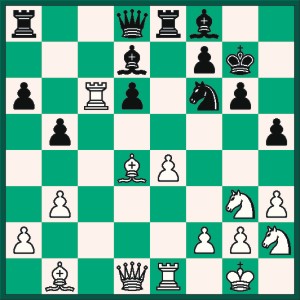|
Time
Out
Theory
vs. originality Chess
Masters
today rely a bit too much on home work, particularly in the
opening. The first original move is often made after 20 or
even 30 rapid-fire shots according to 'theory'. Watching the
game is also a different proposition these days. You see the
two players trying to make their moves as quickly as possible
at the initial stage. The time thus saved can be very useful
when a player is on his own in the unfamiliar terrain of a
middle game with too many possibilities. Some games are lost
in the opening when one of the players misses the theoretical
move and finds himself in a hopeless position.
So memory
plays an important role here. But then only positional understanding
can help a player find the correct continuation in any position.
And having a good memory is not always enough because of those
nasty novelties. Even in well-known positions, players are
trying to find new moves. And if the new move leads to a lot
of complications, a player may lose his way over the board.
Chess is interesting because it is far from exhausted! New
possibilities are being explored and found all the time. The
game is enriched in the process.
That
said, the players at the master level usually prefer to tread
the well trodden paths. Small wonder, some variations in the
major openings have become 'standard'. But there are still
masters who have their own interpretation of the openings.
They may try rarely played variations or the 'museum openings'
played, say, 100 years ago. Grandmaster Alexander Morzevich
who played the first board for Russia (a great honour for
any player on earth) in the Mallorca Olympiad is known for
his wonderful originality. He has revived some of the openings
that were not played at the top level in the last 50 years
or so. Have you heard any modern master trying the Centre
Game on a regular basis?
In the
following game Morzevich employs a 'standard set-up' but is
outplayed by Surya Shekhar Ganguly, the West Bengal Grandmaster
who has many fans in Bangladesh.
White-
Surya Shekhar Ganguly (2531)
Black-A Morzevich(2707) [C93]
FIDE World Cup-Hyderabad 2002
1.e4 e5 2.Nf3 Nc6 3.Bb5 a6 4.Ba4 Nf6 5.0–0 Be7 6.Re1
b5 7.Bb3 d6 8.c3 0–0 9.h3 h6 10.d4 Re8 11.Nbd2 Bf8 12.Nf1
Bd7 13.Ng3 Na5 14.Bc2 c5 15.b3 Qc7 16.Be3 g6 17.Rc1 Nc6 18.Bb1
Kh7 19.Nh2 h5 20.Qf3 Kg7 21.Qd1 exd4 22.cxd4 cxd4 23.Bxd4
Qd8 24.Rxc6 Bxc6 25.Qc1 Kg8 26.Qxc6 Re6 27.Qc3 Rc8 28.Qb2
Nd7 29.Rd1 Bh6 30.Nf3 Qc7 31.Ne2 Ne5 32.Ne1 Nc6 33.Qa3 d5
34.exd5 Rxe2 35.dxc6 Qxc6 36.Nf3 Ree8 37.Qb2 Rcd8 38.Rf1 Qd5
39.a3 Re6 40.b4 Ree8 41.Be5 Qe6 42.Bf6 Rd6 43.Be5 Rdd8 44.Re1
Qd7 45.Bc2 Qc6 46.Bb3 Re7 47.Ra1 Rde8 48.a4 Qd7 49.Rd1 Qf5
50.Bc2 Qc8 51.axb5 axb5 52.Rd5 Qc6 53.Rd6 Qc8 54.Bb3 Qc1+
55.Qxc1 Bxc1 56.Rxg6+ Kh7 57.Rg7+ Kh6 58.Bc2 f5 59.Rxe7 Rxe7
60.Bxf5 Bd2 61.Bd6 Rf7 62.Bd3 Bf4 63.Bc5 1–0

Position after 24.Rxc6
-PATZER
Copyright
(R) thedailystar.net 2004
| 